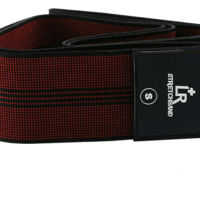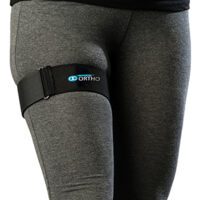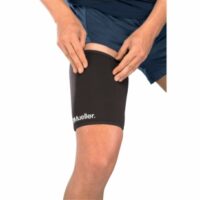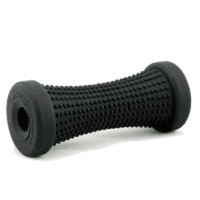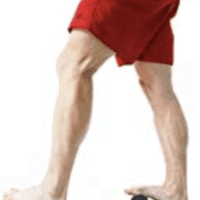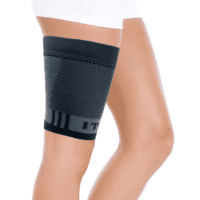Hamstring Pain
Article by John Miller


Hamstring Pain
Treating, and Preventing Common Athletic Injuries
Hamstring injuries, a frequent issue among athletes, significantly affect performance by causing pain and enforced inactivity. This article, infused with a physiotherapist’s insights, explores hamstring injuries, especially strains and tendinopathies, and the crucial aspect of differentiating these from sciatica.

Managing Hamstring Injuries
Hamstring injuries vary in form but share common impacts on athletic performance. Let’s discuss the most prevalent types – hamstring strains and proximal hamstring tendinopathies – and the importance of considering sciatica or a lumbar disc bulge as a differential diagnosis.
Hamstring Strains: A Common Culprit
Hamstring strains are typically partial or complete tears in the muscle fibres. These injuries frequently occur during activities like sprinting, jumping, or kicking, where sudden acceleration or deceleration is involved. Symptoms range from mild discomfort to severe pain and limited leg movement. In extreme cases, surgical intervention might be necessary.
Proximal Hamstring Tendinopathy: A Gradual Onset
Proximal hamstring tendinopathy, emerging slowly from repetitive stress, primarily affects the tendons near the hip. Pain and tenderness in the buttock area, particularly where the tendons attach to the sit bones, characterise this condition. Activities like running or repetitive hip flexion exacerbate it, and symptoms may intensify with prolonged sitting or high-intensity activities.


Sciatica: A Key Differential Diagnosis
Hamstring injuries and sciatica can present similar symptoms, like radiating pain and tingling. Differentiating between these conditions is vital for effective treatment. This involves thorough physical examinations and possibly diagnostic tests like imaging or nerve conduction studies.
Recent Research Insights
Emerging studies highlight the effectiveness of eccentric strengthening exercises in preventing hamstring injuries. Gluteal muscle weakness is also a likely contributor.
Research also suggests that neuromuscular training can enhance muscle coordination and reduce injury risk. These insights underscore the importance of a comprehensive and tailored approach to both treatment and prevention.
Treatment and Rehabilitation: A Multi-Pronged Approach
Immediate measures like RICE (Rest, Ice, Compression, Elevation) therapy are crucial post-injury. Rehabilitation typically involves physiotherapy with stretching and strengthening exercises. Severe cases may require medical interventions such as corticosteroid injections or surgical repair.
Prevention Strategies
A holistic prevention strategy is key. It should include maintaining hamstring flexibility, strength, and conditioning, alongside dynamic warm-up exercises before physical activities. Strengthening core and gluteal muscles is also vital for hamstring support and injury prevention.
Conclusion and Call to Action
For athletes, understanding, treating, and preventing hamstring injuries is crucial for a safe and swift return to sports. Recognising the symptoms and adopting a multifaceted prevention and treatment strategy can significantly reduce injury risk. Identifying and differentiating conditions like sciatica is also crucial for effective management.
We encourage athletes to consult their physiotherapist for tailored advice and treatment plans, ensuring a comprehensive approach to recovery and performance enhancement.
Further Reading
Rochedale - Call 38410277
Book Online: RochedaleSalisbury - Call 32751044
Book Online: SalisburySandgate - Call 32691122
Book Online: SandgateArticle by John Miller
Thigh Injuries
Thigh injuries can significantly impact your daily life and activities, whether you're an athlete or someone who enjoys staying active. As a physiotherapist, I often encounter individuals seeking assistance for various lower body ailments. In this guide, I'll discuss the most common thigh injuries, their causes, prevention strategies, and when to seek professional advice.


Common Thigh Injuries
- Thigh injuries encompass a range of conditions, including muscle strains and contusions. These injuries often occur during sports activities, sudden movements, or accidents. Symptoms may include pain, swelling, bruising, and difficulty moving the affected leg.
- A hamstring strain involves damage to one or more of the muscles at the back of the thigh. This injury is prevalent among athletes, particularly those involved in sports requiring sprinting, jumping, or sudden changes in direction. Symptoms include sharp pain, tenderness, and weakness in the hamstring muscles.
- Iliotibial band syndrome, or ITB syndrome, is a common overuse injury among runners and cyclists. It occurs when the ITB, a thick band of tissue running along the outside of the thigh, becomes inflamed or irritated. Symptoms typically include pain on the outer side of the knee, especially during activities such as running or cycling.
- Runner's knee, also known as patellofemoral pain syndrome, is a common complaint among runners, cyclists, and individuals who engage in repetitive knee movements. It causes pain around or behind the kneecap, often exacerbated by activities such as climbing stairs, squatting, or sitting for prolonged periods.
- Sciatica refers to pain that radiates along the path of the sciatic nerve, which runs from the lower back through the hips and down each leg. It can result from various factors, including a herniated disc, spinal stenosis, or muscle tightness. Symptoms may include sharp or burning pain, numbness, tingling, and weakness in the legs.
Prevention Strategies
Preventing lower body injuries begins with understanding the risk factors and implementing proactive measures. Here are some strategies to help you safeguard your lower body health:
- Warm-up and Cool-down: Incorporate dynamic warm-up exercises before physical activity to prepare your muscles and joints for movement. Follow up with gentle stretching and cool-down exercises to aid in muscle recovery and flexibility.
- Gradual Progression: Avoid overexertion by gradually increasing the intensity, duration, and frequency of your workouts. Sudden spikes in activity level can increase the risk of injury, so listen to your body and progress at a pace that feels comfortable.
- Proper Technique: Ensure proper form and technique during exercise to minimise the risk of strain or injury. Consult with a qualified fitness instructor or physiotherapist to learn correct movement patterns and modifications tailored to your needs.
- Strength and Flexibility: Incorporate strength and flexibility exercises targeting the muscles surrounding your thighs, hips, and knees. Focus on exercises that improve stability, balance, and range of motion to support your lower body joints during physical activity.
- Rest and Recovery: Allow for adequate rest and recovery between workouts to prevent overuse injuries and promote muscle repair. Listen to your body's cues and avoid pushing through pain or fatigue, as this can lead to further injury.
Conclusion
By prioritising prevention strategies and seeking professional guidance when needed, you can minimise the risk of experiencing debilitating lower body injuries. Remember to listen to your body, respect its limits, and invest in its long-term health and functionality.
What to Do?
If you're experiencing persistent pain or discomfort in your lower body, it's essential to seek the guidance of a qualified physiotherapist. They can assess your condition, provide targeted treatment, and develop a tailored rehabilitation plan to help you recover safely and effectively.
Rochedale - Call 38410277
Book Online: RochedaleSalisbury - Call 32751044
Book Online: SalisburySandgate - Call 32691122
Book Online: SandgateRelated Articles
- Understanding and Treating Thigh Injuries
- Preventing Hamstring Strains: Tips and Exercises
- Managing ITB Syndrome: Effective Treatment Strategies
- Runner’s Knee: Causes, Symptoms, and Treatment
- Sciatica Relief: Exercises and Therapies
- Lower Body Strengthening Exercises for Injury Prevention
- The Importance of Warm-up and Cool-down for Athletes
- Understanding Overuse Injuries in Sports
- Effective Strategies for Rest and Recovery
- When to Seek Physiotherapy for Sports Injuries





